



Psst! ... How are your pension savings doing?

We provide you with a general view of your savings, your return and your insurance plans at mitpfa.dk











Psst! ... How are your pension savings doing?

We provide you with a general view of your savings, your return and your insurance plans at mitpfa.dk






LAURA MAERSK, the world's first container ship with a dual-fuel methanol engine, was named in September after months of preparation and deployed on a route in the Baltic Sea.
The crew members on board are proud to contribute to the green transition.
By Troels Leth, SEA HEALTH & WELFARE · Photo: Jørgen Jacob Jensen/MeisterstückThe naming ceremony for the container ship LAURA MAERSK was a remarkable event held at the Port of Copenhagen on September 14, drawing a large audience.
With a 2,100 TEU capacity, LAURA MAERSK isn't designed for transatlantic routes. However, the day's spotlight was not on the ship's size but on its groundbreaking feature – being the world's first container ship specifically designed to operate on methanol.
In his speech at the naming ceremony, Robert Uggla, Chairman of MÆRSK, expressed the vessel's potential as follows:
"While it is a small ship, its significance and impact transcend its physical dimensions. (...) This is the beginning of a green revolution in our global supply chains."
A number of prominent guests were invited to the ceremony. Accompanied by the leadership of MÆRSK and the Danish

Minister of Business, Ursula von der Leyen, President of the European Commission, had the honor of smashing the traditional champagne bottle against the ship's bow.
For the ship's crew, the naming ceremony is the culmination of months of preparation and hard work.
Among them are 3rd Engineer Peter Blicher Poulsen and 3rd Mate Kalle Hagil Jensen, who were on board for the container ship's inaugural journey from the shipyard in South Korea to Copenhagen, arriving a few days before the naming.
For both, the sustainable aspects of their ship are a source of pride.
"On a personal level, it is a great honor to be on the front lines aboard the world's first container ship powered by methanol, literally making history. I clearly feel that LAURA MAERSK is a significant step towards something greater in our industry," says Kalle Hagil Jensen.
“We have to coordinate some tasks to a greater extent, but it's just a matter of good planning," explains Kalle Hagil Jensen.
As the Second Mate, Peter Blicher Poulsen has a specific role in ensuring that the dual-fuel engine operates optimally, allowing MÆRSK to reap the full benefits of both LAURA MAERSK and the even larger methanol-powered container ships set to be delivered in 2024.
"I believe there is a tremendous responsibility in being among the first to work with this technology. If we succeed with this ship, the entire process that MÆRSK is undertaking will succeed," he says.
In typical operation, LAURA MAERSK has a crew of 16. On the first journey to Copenhagen, Denmark there were 20 crew members on board. Kalle and Peter notice that the entire crew diligently approaches tasks on LAURA MAERSK.
"It is evident that we all share a common mission and are passionate about making it succeed. Everyone goes the extra mile and puts in extra hours to get to know the ship and tackle the tasks," says Kalle Hagil Jensen.
In contrast to Kalle, who joined LAURA MAERSK after it departed from South Korea, Peter was on the entire journey. He arrived in South Korea two weeks before departure to familiarize himself with the ship and ensure everything was in order before setting sail.
"There was hectic activity on board with people from the shipyard and the companies delivering the engines. It felt like everything was happening at once, so I had to adjust to that," says Peter Blicher Poulsen, continuing:
"I have also invested much personal time to become familiar with the technology and the engine's layout. At the same time, I have focused on building good collaboration with colleagues on board and
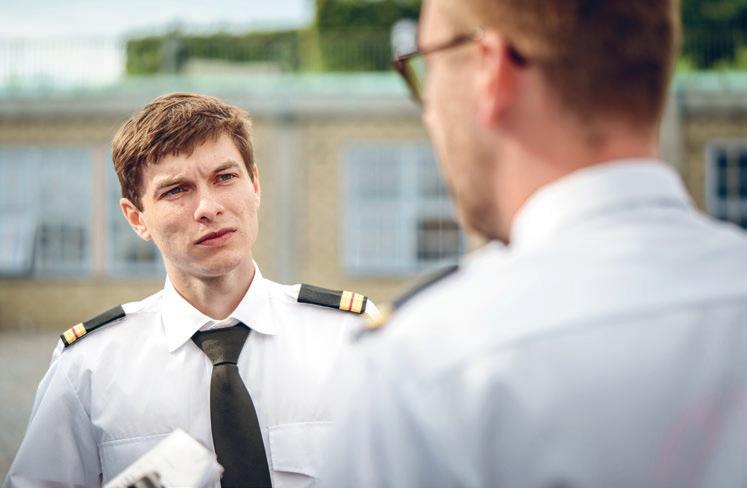
"I
with employees from the shipyard. It is well worth it because you need to know how everything fits together on day one at sea."
In addition to getting to know the brand-new container ship and preparing it for its regular route in the Baltic Sea, Peter and Kalle have also been busy showcasing the vessel while it was docked in Copenhagen for the naming ceremony.
There was great interest in the ship from MÆRSK's employees and shareholders, journalists, and curious citizens, and several guided tours on the vessel were arranged. It was a welcome break from their regular duties on board LAURA MAERSK for Kalle and Peter.
Shipping companies globally have placed orders for over 100+ dual-fuel methanol ships, with additional vessels undergoing retrofitting for methanol use. Other Danish companies such as TORM and ESVAGT also invest in methanol-powered ships.
"Being in port and meeting many curious people was very nice. For example, I talked to a man who was a Second Mate at the ØK shipping company in the 1970s. He knew all about being a Second Mate and had many questions about the engines and equipment on the bridge of LAURA MAERSK. It's great to share your knowledge that way," says Kalle Hagil Jensen.
Peter also enjoyed his time in Copenhagen.
"It was great to be right here in the heart of Copenhagen and showcase the ship. We received a lot of questions, both from people familiar with the maritime industry and from those who know nothing about a modern ship," he says.
• 72-meter-long feeder vessel of 2,100 TEU.
• Deployed on the BremerhavenHelsingborg - HalmstadKalundborg - Fredericia route.
• Can also be connected to shore power in ports with the necessary infrastructure.
Methanol ships have more fuel tanks than traditional diesel-powered container ships, and bunker operations require more planning. And then there's the color purple to consider. These are some of the lessons learned by the crew on LAURA MAERSK, the world's first methanol ship.
Methanol as a fuel is a cheaper and much more environmentally friendly alternative to diesel and fuel oil. However, it is not an entirely unproblematic technology - methanol is highly flammable. The container ship LAURA MAERSK crew was aware of this from the very beginning, and they have long since become accustomed to the changed working procedures on board.
"A lot is as usual," point out 3rd Mate Kalle Hagil Jensen and 23rd Engineer Peter Blicher Poulsen, who have sailed on the LAURA MAERSK from the beginning. But there are also significant differences, especially regarding safety and prevention.
"For example, we were used to being able to work as normal, even if there was a bunkering operation going on. But on LAURA MAERSK, we have to coordinate bunkering with the terminal, so containers are either discharged before or after bunkering. Also, lashings must not be removed. So, we have to coordinate these tasks to a greater extent, but it's just a matter of good planning," explains Kalle Hagil Jensen.

The color purple has taken on a special meaning on the methanol ship. A large part of the deck is colored purple to make it clear that a methanol operation is in progress.
"We take safety very seriously. As part of the training, all crew members know that if they see the color purple anywhere
on board or ashore, they must keep their distance, especially when bunkering," says Peter Blicher Poulsen.
As the dual-fuel concept suggests, LAURA MAERSK can run on methanol and diesel. The methanol tanks are directly in front of the engine, while the diesel tanks are at the back of the ship.
By Troels Leth, SEA HEALTH & WELFARE “You need to know how everything fits together on day one at sea," says Peter Blicher Poulsen, 3rd engineer on LAURA MAERSKDue to the possibility of switching between methanol and diesel, there is a closer dialog about the ship's schedules between the bridge and the engine. There are, for example, some things about the speed underway to consider while sailing.
"Normally, when you sail from A to B, you want to sail at the same speed along the way, e.g. 12 knots. Now, we have methanol, which we want to use as much as possible on the route. So, for example, we will start by sailing 16 knots with methanol and finish by sailing 10 knots on diesel. We need to coordinate the switch between the two fuel types to ensure the most efficient operation," says Kalle Hagil Jensen.
Peter and Kalle know the procedure with steam turbines from older ships, where a certain amount of power is needed for certain types of cargo to sail optimally.
"Now we just have to consider a few different things - also in relation to the waters we sail in. LAURA MAERSK sails in the Baltic area, an environmental protection area with special requirements for reducing sulfur emissions. We also need to communicate this because Kalle is the one who knows where the lines are on the chart," says Peter Blicher Poulsen.
Worldwide, there are four Emission Control Areas with special requirements for reducing air pollution: The Baltic Sea, the North Sea, the North American ECA, including most of the US and Canadian coast, and the US Caribbean ECA.
Methanol (CH3OH) is less expensive to produce sustainably than ethanol fuel, although it produces more toxic effects than ethanol and has lower energy density than gasoline. Methanol is safer for the environment than gasoline, it is an anti-freeze, and it keeps the engine clean.

LAURA MAERSK runs on methanol and can achieve a reduction in CO2 emissions of up to 95% compared to a similar ship running on fuel oil.
In 2023, MÆRSK has chosen a supplier of methanol, which, from a life cycle perspective, provides a reduction in CO2 emissions of approximately 65%.
The term life cycle perspective describes the total CO2 emissions of a fuel type. When calculating the CO2 emissions from methanol, for example, the emissions from the entire process are considered, from the production and transportation of the fuel to its consumption in the ship's engine.
In 2024, LAURA MAERSK will sail on e-methanol, produced with green

electricity and biogenic CO2. This will bring the reduction in CO2 emissions even closer to 95%.
MÆRSK states that they have ordered the delivery of 25 methanol-powered ships. By 2030, the ambition is to have up to 25% of the company's vessels running on e-methanol.
LAURA MAERSK can achieve a reduction in CO2 emissions of up to 95% compared to a similar ship running on fuel oil. The dual-fuel engine on LAURA MAERSK. Photo: MÆRSKOn 27 and 28 February 2024, SEA HEALTH & WELFARE attended the World Maritime Forum conference in Copenhagen, Denmark. Among the many visitors, interest in counseling and tools to support seafarers’ mental well-being was high.
At the World Maritime Forum in Copenhagen on 27 and 28 February 2024, many guests from shipping companies and others could find SEA HEALTH & WELFARE’s stand among manufacturers of navigation equipment, suppliers of green technologies, and various software solutions.
The conference had four main themes, one of which, The Human Factor: Seafarer Safety And Well-Being, fits perfectly with SEA HEALTH & WELFARE’s purpose.
SEA HEALTH & WELFARE offers a range of services and products on mental well-being and a good working environment to shipping companies and ships flying the Danish flag. Attending the conference provided
good opportunities to establish contact and dialogue with shipping companies and other companies interested in seafarers’ welfare.
“There has been an increased focus on the safety and welfare of seafarers in the maritime industry. This is very gratifying, and exactly what we want to discuss with industry players at a conference that brings together the entire industry,” says Rene Andersen, CEO of SEA HEALTH & WELFARE.
At the fair, shipping companies and other maritime organizations showed great interest in the mental well-being guides SEA HEALTH & WELFARE has produced and distributes free of charge to Danish-flagged vessels.
“We do not offer our products and services free of charge to shipping companies and ships not sailing under the Danish flag. But we would like to enter into a dialogue with shipping companies that have ships flying both the Danish flag and other flags about access to these services so that we can contribute to the mental well-being of seafarers in other parts of the world,” says Mathias Augustsen, Head of SEA HEALTH & WELFARE.
After the conference, SEA HEALTH & WELFARE’s consultants follow up on the contacts established with interested guests.

There were many guests and plenty of opportunities to discuss the safety and well-being of seafarers at the conference.
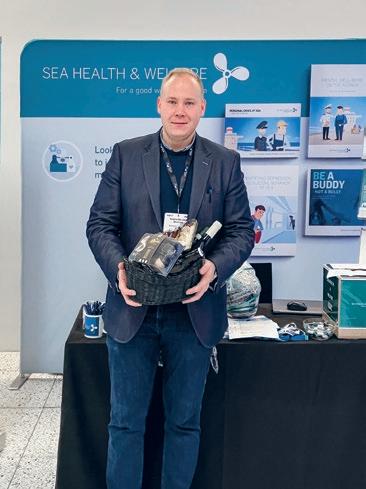
Billedtekster:

All visitors had the opportunity to take part in a quiz in which they had to answer three questions about SEA HEALTH & WELFARE. Two prizes were drawn from the participants with three correct answers. Technical Manager Jacob Christensen presented the prizes to the lucky winners: Nicolai Westrup from Unifeeder and Chris Ludvigsen from Uni-Tankers, who could not collect the prize himself.

In addition to the Mental Health Toolbox, the consultants at the stand spent a lot of time talking about the Helpline for Seafarers and FIT4SEA, a web platform for registering for training. The platform also works offline and is, therefore, very popular among the nearly 4,000 seafarers who use it.
Among the many guests who stopped by the stand was Captain Thomas Lindegaard from Maersk, a well-known social media profile. We chatted about ship safety organization and how the Mental Health Toolbox is valuable for the ship’s management and crew.

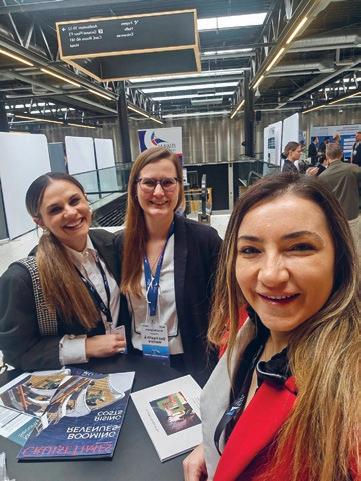
Among the conference guests, there was also time to talk to friends and acquaintances. Here, consultant Anna Bergmark (center) talks to two guests from MÆRSK.
There was great interest in SEA HEALTH & WELFARE’s Mental Health Toolbox, which consists of three guides and the Be a Buddy—Not a Bully campaign. The toolbox will be continuously expanded with new guides.
When a crew is characterized by high diversity, e.g., differences in age, nationality, and cultural background, demands on the ship’s management are raised. That’s why the shipping company KNOT MANAGEMENT in Denmark sends all senior officers on their Danish-flagged ships on a course in work environment and mental well-being at sea, based on materials from SEA HEALTH & WELFARE
What are possible reasons why seafarers may experience bullying or harassment on their ship?
This was one of the questions that eight senior officers (top 4) from the shipping company KNOT MANAGEMENT DENMARK were asked to consider when
By Troels Leth, SEA HEALTH & WELFAREthey recently gathered for a companydefined two-day course on working environment and mental well-being at sea.
The purpose of the course was to teach specific management tools that can help officers ensure a good working environment on board. The course

leaders were Mads Schramm and Søren Diederichsen, psychologists at SEA HEALTH & WELFARE.
“For almost ten years, we have had an internal course on leadership at sea for our officers. During the COVID-19 pandemic, global challenges with loneliness, diversity, and other issues made us focus even more on how we could improve the overall environment on board and manage our crews. In this context, I talked to Søren and Mads about creating a kind of superstructure for our leadership course for officers on Danish-flagged ships,” says Bo Hauge, Crewing Manager at KNOT MANAGEMENT DENMARK.
Good leadership makes it easier to retain employees
During the mandatory course, participants are introduced to the guides Leading Diversity, Be a Buddy - Not a Bully, Mental Well-being on the Agenda - Tools for Ship Management, and The 8 Safety Links.
Small group discussions added dynamism and knowledge sharing to the course.
Photo: SHW

Despite
serious topics
“Seafarers spend about half their working life at sea on our ships. When we give our managers more specific tools to add to their existing ‘toolbox’ to help them fulfill their leadership role in the best possible way, it also shows in the retention of our employees. More people want to stay with us, which naturally has an extra incentive to develop our managers further,” says Bo Hauge.
It is essential to understand your behavior
The course alternates between presentations and group discussions, where participants share their own experiences as senior officers. Bo Hauge is also attending the course, and he would like ship managers to actively use one guideline on their ships.
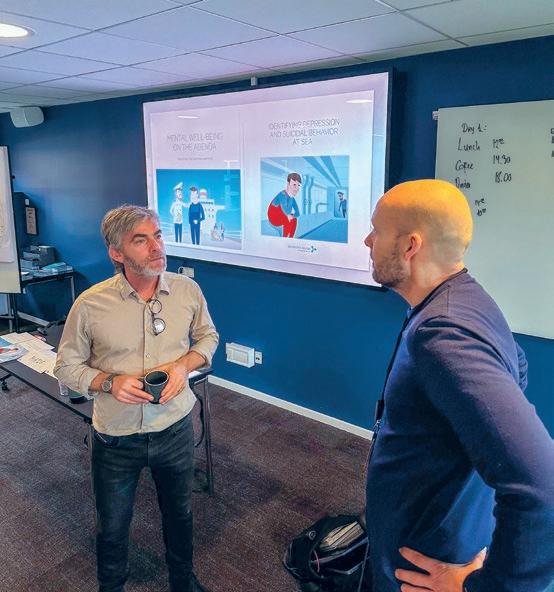
“The Leading Diversity Guide has a theme of self-assessment, where the manager has to assess how employees perceive you. This can provide important insight into your leadership behavior, which can make a big difference on ships where the crew consists of people of different ages, genders, experience, and cultural backgrounds,” says Bo Hauge.
One of the participants is Chief Engineer Robert Fuks. He works on a ship with 26 crew members and is the supervisor for nine of them. The crew members come from Denmark, the Faroe Islands, Poland, Brazil, and the Philippines.
He appreciates that the shipping company invests in sending the ship’s management to management courses.
Why do bullying and harassment typically occur?
• Unresolved personal conflicts in the workplace
• Bullying used as punishment
• A person deviationg from the norm
• Harsh tone or gossip in the workplace
Source: SEA HEALTH & WELFARE, et.al.
The course provides participants with inspiration and knowledge that they can put into practice on board their ships.
“I think the course is really good. For example, it is gratifying for me as a manager to become more aware of how to ask questions or give feedback in a constructive way that allows others to feel that they can speak their mind. There may be some crew members who come from a culture where you don’t want to talk about a problem because you’re afraid of saying the wrong thing and risk being fired. So, a better awareness on how to communicate well with the seafarers is really important,” says Robert Fuks.
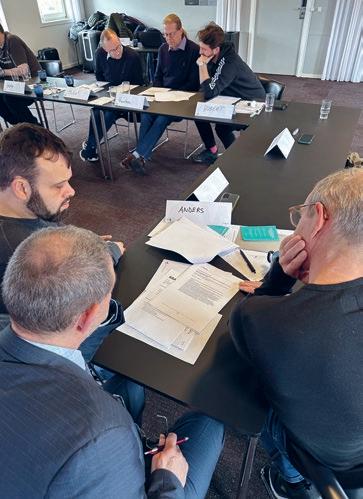
As of 1 March 2024, Sune Feldthusen Husted is a SEA HEALTH & WELFARE consultant. After ten years as a teacher, he looks forward to focusing on prevention and the chemical working environment on ships.
Since autumn 2023, when senior consultant Anne Ries unfortunately became seriously ill and passed away, SEA HEALTH & WELFARE has been looking for her successor. On 1 March this year, Sune Feldthusen Husted had his first working day as a consultant specializing in chemical products and the chemical working environment.
Sune is 46 years old and a trained chemist. He has worked at a research laboratory, where occupational health and safety are the main topics, since 2005. For the past ten years, he has been a lecturer.
“Over the years, I have worked broadly with occupational health and safety. Now I have the opportunity to work more focused on prevention and safety concerning chemical products and the chemical working environment,” says Sune Feldthusen Husted and continues:
“At the same time, it means a lot to me to dialogue with the seafarers who work with chemical products on a daily basis. I see it as my job to ensure that no seafarer comes home with a claw, wooden legs, and an eye patch.”
Although Sune has barely settled into his new office, he has already identified the
By Troels Leth, SEA HEALTH & WELFAREtopics he will look into as a consultant at SEA HEALTH & WELFARE.
“Broadly speaking, I will advise ships and shipping companies on safety and prevention when using chemical products. Currently, there is a lot of focus on PFAS substances, clean drinking water, and epoxy, and I will be looking at these in relation to the chemical working environment on ships.”
Sune has a good knowledge of PFAS, among other things, because he has analyzed PFAS substances in water samples and helped develop new methods to purify water for PFAS.
And then there’s one more thing he wants to focus on: chemical waste sorting.
“In our guidelines, we write a lot about how to use personal protective equipment. I
want to go one step further and describe how to handle the chemical residues that typically remain after the job is done, what we call waste sorting. Not everyone knows what to do with a leftover hardening material or the rag of paint you’ve wiped up. One option is to include it in the chemical database,” says Sune Feldthusen Husted.
Knows the forces of the sea
Sune is a keen recreational sailor. He got an optimist dinghy at eight and has since owned four sailboats. One experience at sea in particular has given him a good knowledge of the forces of the sea.
“A few years ago, my sailboat capsized during a storm in the Little Belt. I was alone on board and had to swim two kilometers to get ashore. The boat has never been found. It was tough, but I love being at sea and wouldn’t miss it for the world,” he says.
Contact Sune
If you need advice on a chemical product or the chemical working environment in general, please contact Sune Feldthusen Husted at sun@shw.dk or +45 2961 8860.
Sune is 46, married to Rie, and has an 8-year-old daughter. He has a degree in chemistry from the University of Copenhagen.
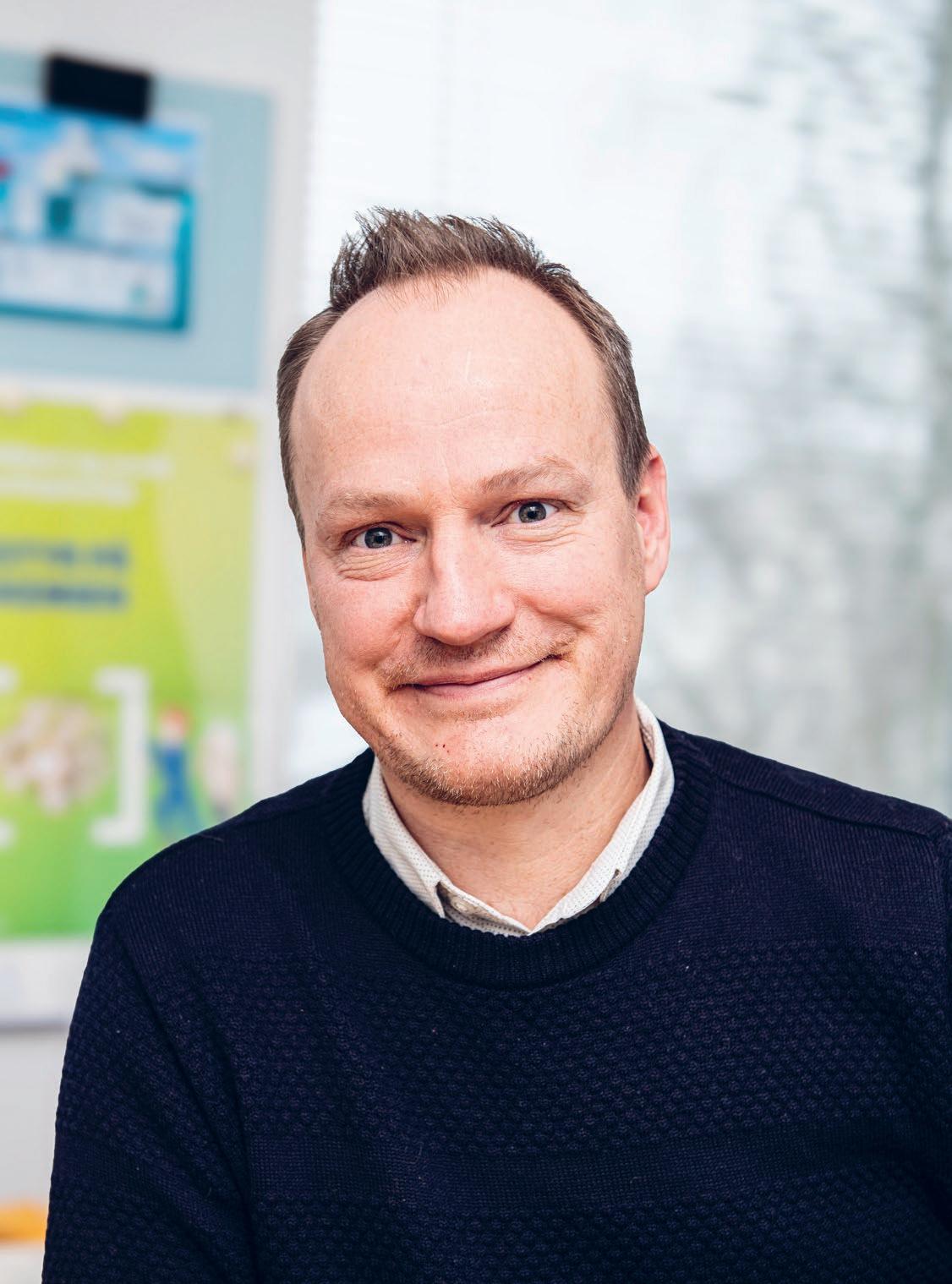
SEA HEALTH & WELFARE receives an increasing number of inquiries from shipping companies and ships who are unsure what to do when they receive chemical products without a code number. In this article, we highlight why code numbers are very important for preventing long-term effects from exposure to chemical products.
All vessels use various chemicals daily, including oils, glues, solvents, paints, and other chemicals. On Danish-flagged vessels, all chemical products must come with a Code number.
As the requirement for code number labeling of chemical products is a unique Danish requirement, it sometimes happens that a shipping company or ship purchases a product that is covered by the requirements but does not have a code number.
By Troels Leth, SEA HEALTH & WELFARE“The code number is crucial to ensure that the person using the chemical - and other people who may be exposed to it –can use the correct and legally required personal protective equipment,” says Ester Ørum, consultant at SEA HEALTH & WELFARE.
“If, for example, you don’t take proper precautions against inhalation of toxic vapors or contact with a chemical, it can cause immediate or long-term damage,” she points out.
It is the captain’s duty to ensure that all chemical products on board the ship are correctly labeled with a code number before use.
“The code number helps the supervisor and the user to take the right safety measures to eliminate or minimize the impact of using the chemical products,” says Ester Ørum.
How is the code number used?
The code number consists of two numbers connected by a hyphen. The numbers indicate which safety measures and physical protective equipment must be used when using the product.
The number before the hyphen specifies safety measures to avoid inhalation of hazardous vapors. In other words, the requirements for ventilation and respiratory protection.
The number after the hyphen specifies the safety measures to avoid physical contact with, e.g., skin and eyes, and
possible ingestion, including, e.g., smoking or eating without prior hand washing.
In the code number table, you can find the types of ventilation or protective
equipment required when using the chemical product.
See the table on shw.dk under Physical work environment → Chemicals → Code numbers and labeling of chemicals.

The
Which products must have a code number?
Not all chemical products must be labeled with a code number, but the following product types must have a precise code number according to the regulations:
• Adhesives
• Paint, varnish, and printing inks
• Fillers and thinners
• Degreasers, detergents, and color removers.
The rules for labelling chemical products can be found in Appendix 1 to the Danish Working Environment Authority’s Executive Order No. 301 of 13 May 1993 on determining code numbers.
Where can I find the code number?
As a minimum, the code number must be available in writing where the product is stored. Often, the code number will be visible on the packaging, but it is not
a requirement that the code number is listed on the packaging or on the product itself.
If the code number is unavailable on the product, you may find it on its safety data sheet (SDS). Here, the code number usually is listed under item 15.
If the product is available in the Chemicals Database in @SEA-@SHORE, the code number will appear under Product Information.
How do I get a code number for a product without a code number?
If you have purchased a chemical product without a code number, there are two ways to find the code number that applies to the product:
Contact the supplier of the product and ask them to calculate and assign the product a code number according to the rules for determining code numbers or:
Contact a company specializing in code numbering. Ask them to calculate the code number based on the chemical composition stated in the safety data sheet or material from the supplier. Also, they can provide documentation for which code number the product in question should be labeled with the code. The code number must be available in writing on the product
The rules can be found here:
BEK no. 1246 of 11/12/2009
Executive Order on Notifications from the Danish Maritime Authority A, technical regulations on the working environment in ships Chapter II Chemical working environment effects, Section B, Code numbered products.
Annex 1 to the Danish Working Environment Authority’s Executive Order no. 301 of 13 May 1993 on determining code numbers.

On Danish-flagged vessels, all chemical products must come with a Code number.
The dates for our sporting events 2024, MARITIME GOLF and MARITIME FOOTBALL, are ready. If you want to test your handicap or score a hat-trick, read on. We hope for many entries and look forward to seeing you compete for the trophies next year.
MARITIME GOLF
Maritime golf occurs on 21 August 2024 at Golfklubben Lillebælt, near Middelfart, Denmark.
Seafarers and their spouses/partners, both active or retired, students at maritime schools, pilots, offshore, and shipping company employees can participate in the tournament.
Read more and sign up on our website: shw.dk/golf
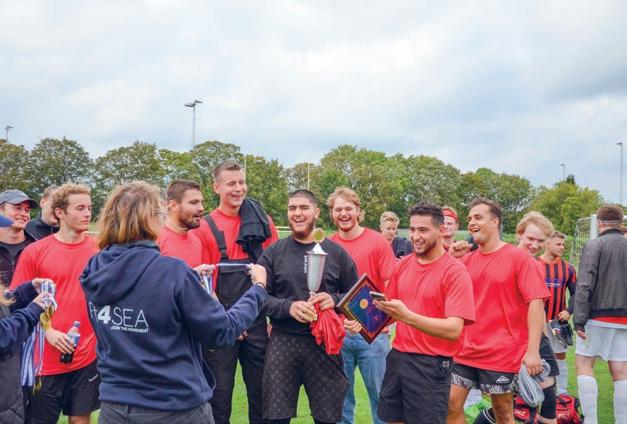
MARITIME FOOTBALL
We are hosting two maritime football tournaments on 7 May and 10 September 2024 at FC Kurant's pitches in Svendborg.
Maritime education programmes, ships and shipping companies can enter as many teams as they wish. A team consists of 7 players + 2-3 substitutes.
Read more and register your team on our website: shw.dk/fodbold

We look forward to seeing you at golf and football in Middelfart and Svendborg.



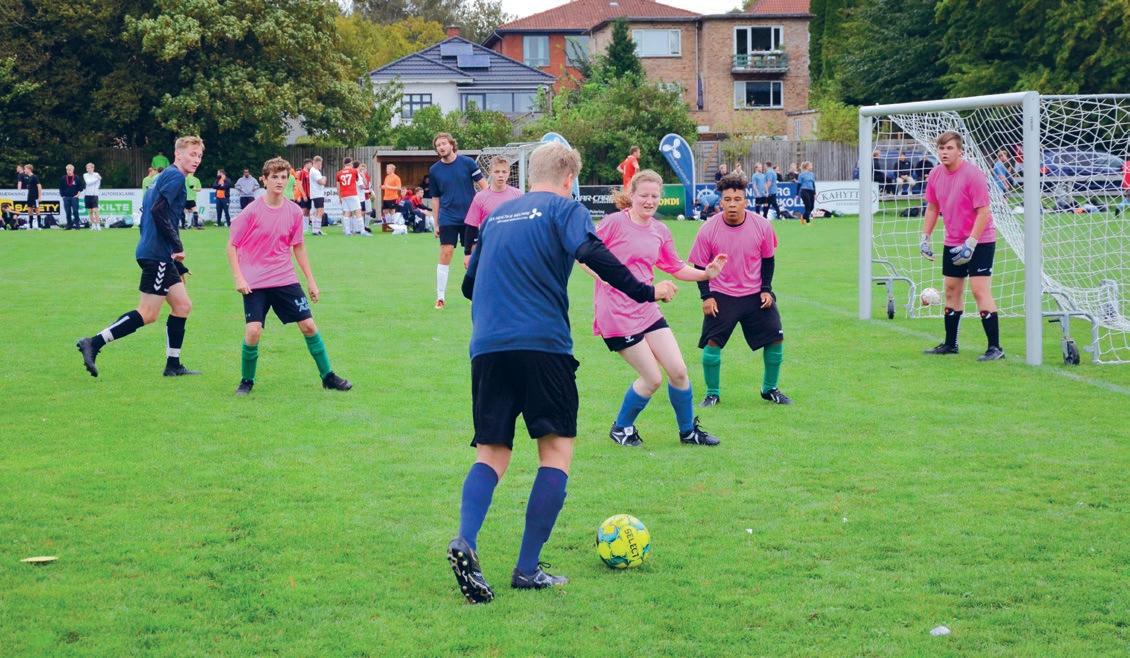
Fifty seafaring photographers participated in this year’s Danish photo competition. Here are the winners.
The judges in the photo competition are Chief Mate Kim Eggers of Royal Arctic Line, photography teacher Jens Kostrup, and photographer Olle Thorup.
As something new this year, the judges had to find winners in four categories: Picture of the Year, Nature, The Maritime Environment, and Life on Board, and find a ‘Joker’ - a picture that stands out in particular.
 By Irene OIsen, Librarian at the Seafarers’ Library
By Irene OIsen, Librarian at the Seafarers’ Library
The judges were positive about this way of rewarding the images.
“Again this year, there are many good images. The motifs are diverse and range from concrete and realistic, describing the daily work at sea, to abstract images with artistic and imaginative expressions. We have considered the graphic design and composition, and at the same time,
Category: Life on Board
Photographer: Electrotechnical officer, Jmaurr Go, TORM SINGAPORE
Title: “The Waiting Game”
A big part of the sailor's world is waiting. Waiting to get out, waiting to get home, waiting... The image expresses this. The strength of the image lies, among other things, in the fact that it breaks with the traditional perception of image structure, left/right orientation.
Prize: A gift worth DKK 1,000
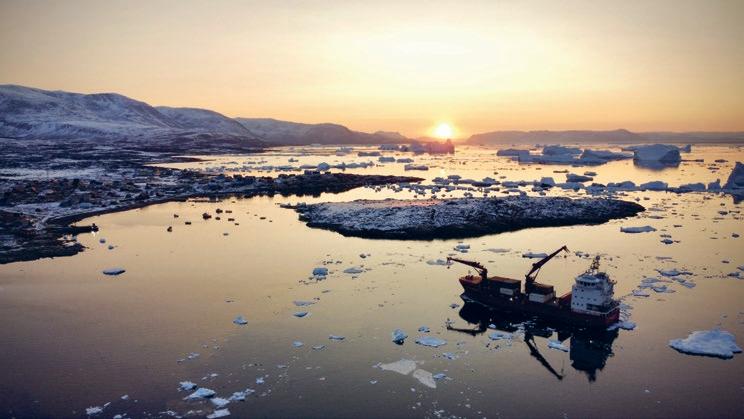
we wanted to find images that tell a story.”
You can see all this year’s photos and read more about the photo competition rules on shw.dk under Welfare → Photo competition.
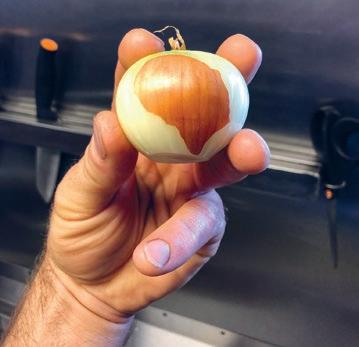
Category: “The Joker” the photo that stands out
Photographer: AB Anders Emil Busch Bluhm, Student
Title: “Onion Art”
The cook has had time to spare and picked a pattern reminiscent of Africa.
The image fits perfectly into the category "An image that stands out". Onion picking has become an art.
Prize: A gift worth DKK 500
Category: Nature
hotographer: Chief engineer Rune Pedersen, MALERAQ ARCTICA
Title: “The Sun rises over Saqqaq”
The modern world meets eternal nature. A calm image in perilous waters. It's a beautiful and dangerous place. We've seen drone images we could do without before, but in this photo, the use of the drone comes into its own.
Prize: A gift worth DKK 1,000
Photographer: Chief Officer Kennet Vinter
Kristensen, EUGEN MÆRSK
Title: “Home Alone”
An example of an image that invites the viewer into a place where few "ordinary" people have been or will have the opportunity to go. The image shows the proportions of the container load.
Note the two happy people alone at home in the empty cargo space in the lower part of the image.
The image is of very high technical quality.
Prize: A gift worth DKK 4,000 sponsored by Den Danske Maritime Fond (The Danish Maritime Fund)
The 2024 photo competition is already underway. We hope many seafarers will participate again this year and send us their photos.
Photographer: Pilot Gert Bjerre, DanPilot
Title: “Winter Morning at Skagen”
Image of the pilot disembarking from the ship. The pilot disembarked. Some of his gear is waiting to be lowered down the pilot ladder. We are heading out of inland waters. A colorful image that gives us a clear sense of excitement. The image clearly shows organization and control, and it gives a clear sense of time, a "before and after". The photographer tells us that the picture is taken while the ship rocks at anchor off Santos in Brazil.
Prize: A gift worth DKK 1,000
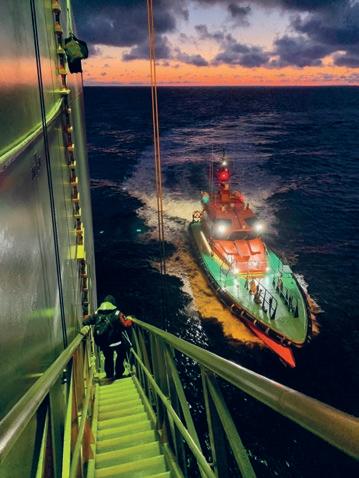

This year’s winning Nordic photo, taken by Swedish ship’s cook Jörgen Språng, is a classic black and white photo. Sweden once again took first place in the Nordic Photo Competition for Seafarers.

The competition features the winning images from the seafarer photo competitions in Denmark, Sweden, Norway, Iceland, and Finland. Once the national competitions are held, the 15 best images from each country move on to the Nordic Seafarers’ Photo Competition.
In 2023, 130 seafaring photographers submitted 808 images. As usual, the judges found five winners and five featured images - see these photos on shw.dk under Welfare → Photo Competition.
The Nordic competition is organized alternately in the Nordic countries. The organizing country provides competent judges, and this year, they were photographer Anneli Karlsson, Samlingsenheten Sjöhistoriska Museet, and communications officer Mikael Dunker from the wreck museum Vrak.
The prizes for 1st to 5th place are sponsored, and we would like to thank this year’s sponsors: Ulykkesforsikringsforbundet for Dansk Søfart, Denmark, Sjøfartsdirektoratet, Norway, Sjöfartstidningen, Sweden, Vinnslutöðin hf. (VSV), Westmann Islands, Iceland, and Finnlines, Finland.
Winner of the Nordic Photo Competition for Seafarers
Title: “100% humidity”
Photographer: Chef Jörgen Språng, MT BITFLOWER, Sweden
The prize of DKK 5,000 is sponsored by the Danish Shipowners’ Accident Insurance Association.
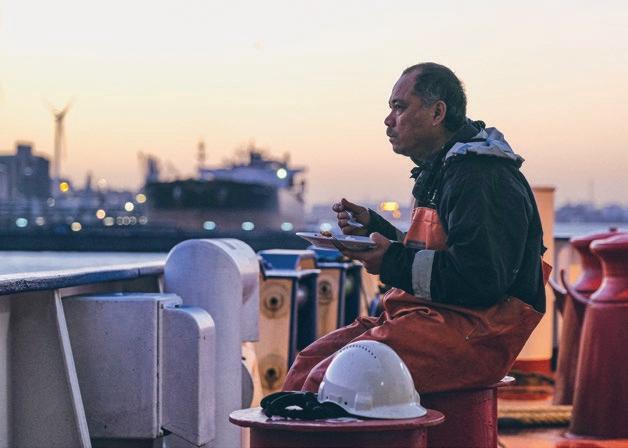
3rd place
Title: “Frame Bearings”
Photographer: Cook Jörgen Språng, MT BITFLOWER, Sweden
Read the judges’ reasons, etc. on shw.dk under Welfare → Photo Competition
4th place
Untitled
Photographer: First Officer Håkon Sunde, NORMAND FRONTIER Norway
2nd place
Title: “Standby”
Photographer: Chef Jörgen Språng, MT BITFLOWER, Sweden
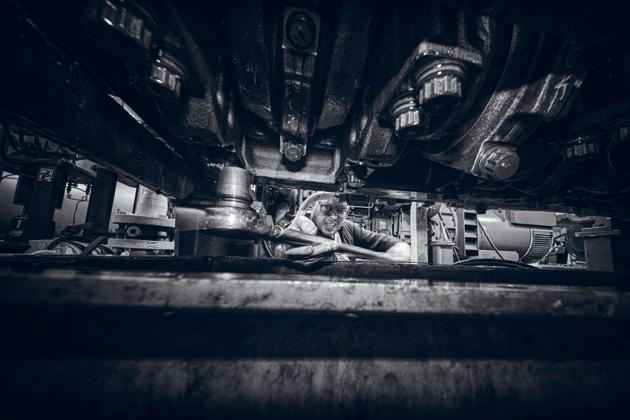
5th place
Title: “The tanker MARIE S passes the beautiful Torungen Lighthouse outbound from Arendal”
Photographer: Pilot Rune Larsen, Norway
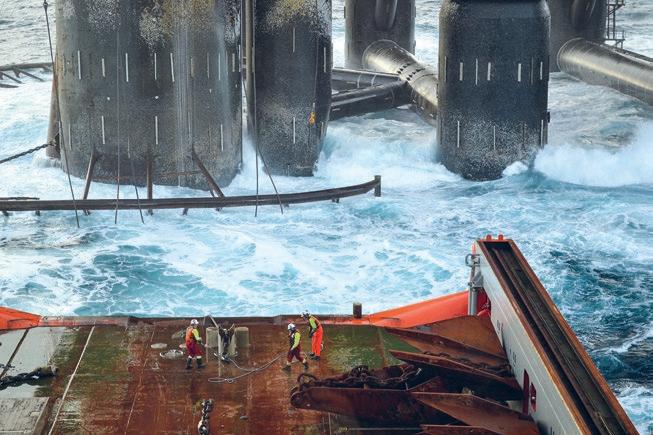

Want to learn a new language or improve an existing one?
Then you can borrow a language course from Libby.
As a Seafarer’s Library user, you have access to several language courses that you can borrow. If we don’t have the language or level that suits you, please get in touch with librarian Irene Olsen, who will find the course you need.
Most courses are audio courses. If you prefer e-books, they can also be ordered, such as Learning English as a Foreign Language for Dummies.
If you prefer a different approach, the book Fluent Forever might be for you. The book presents three keys to language learning: Start by learning pronunciation. Don’t translate. Use memorization schemes such as Spaced Repetition Systems.
The book’s author, Gabriel Wyner, explains that by starting with pronunciation, you learn to re-tune your ears and turn foreign sounds into familiar ones. You’ll train your tongue to produce these sounds accurately using tricks from opera singers and actors.
In the next step, you’ll learn to associate words, sounds, and spellings with pictures instead of translations, enabling you to think in a foreign language. Finally, using sophisticated memorization techniques, you’ll be able to memorize hundreds of words a month by practicing for a few minutes every day.
If you still haven’t got a library card for The Seafarers’ Library, you can get one by

sending this information to bibliotek@shw.dk:
• Your name
• A pin code of your own choice (four numbers are enough)
• Your ship’s name.
When your library card is made you can download electronic books, audiobooks, and magazines directly to your device (phone, tablet, or computer) and read the books offline. You need to be online while downloading.
For more information go to www.sbib.dk










In 2024, we are introducing several new features and opportunities for all FIT 4 SEA users. Here, you get the complete overview.
If you’re keen on the exercise bike, there are now also new free training programs for you. Check out shw.dk/program and see if a program suits you.
Remember, we also have rowing and running programs for both beginners and experienced cyclists.
2024 has also kicked off with a few new features or all FIT4SEA users:
• Favourite activity: Select your “favorite” activity so you
don’t have to scroll far
• Copy activities: Copy your activities so you don’t have to enter the same workout multiple times
• Statistic periods: The new periods give you a better overview of your training history
• Note field: On each workout, you can now write your notes about the workout Calendar: You can view your training sessions via a ca

• Calendar: You can view your training
lendar overview.
Register your training via the FIT4SEA website
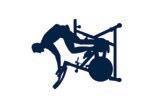
From 2024, you must register data yourself via the FIT4SEA website. This will be the only way to register your training in the competition.

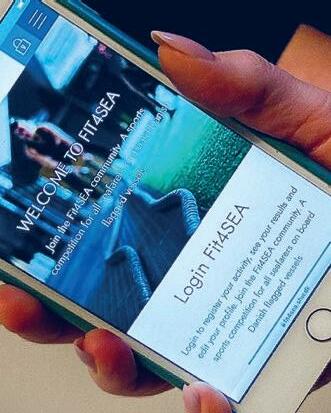
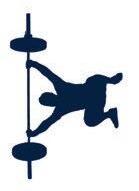
In 2024, the draw is slightly different. From the day you register as a FIT4SEA user, you will automatically be entered into the lottery and have the chance to win even more prizes before the end of the year.
At shw.dk/fit4sea , you can see the winners in all six disciplines in 2023. Maybe you’ll be the one on top of the podium this year. Happy training!
We hope you’ll join us for another active and exciting year in 2024; we can’t wait!


In 2024, we’re ready with a new challenge for all users. We’ve raised the benchmarks because we can see how many kilometers and hours you train. So now we’re keeping up and giving you an extra challenge.
Cross: 250 km
Walking: 250 km
Weight training: 25 hours
The new benchmarks:
Cycling: 500 km
Running: 250 km Rowing: 250 km